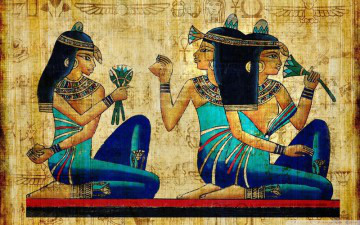History of Aromatherapy

History of aromatherapy begins between five and six thousand years ago. The ancient Chinese and Egyptians were employing the use of oils for a large amount of purposes. The Chinese burned incense as a means of gaining spiritual connectivity. The Egyptians developed a distilling process that allowed them to extract oils from various resources, such as cedar wood, clove, cinnamon, and myrrh. These oils were all used together to embalm the dead and prepare their spirit to travel safely into the afterlife. The Egyptians also used oils as a means of medicinal, spiritual, and cosmetic remedies. It has also been recorded that Egyptian men and women liked to use aromatic oils as a means of perfume.
The Greeks figured out how to mix and use specific oils together to produce many desired results. Some utilized for relaxation purposes and others would be used as stimulants. Olive oil became the most widely used base, to mix with the assortment of essential oils extracted from herbal plants. The Romans took things a step further and began to refine distillation practices first employed by the Egyptians while adding to the number of plant varieties used for homeopathic purposes.
Hippocrates, the father of aromatherapy, used aromatic oils on his patients when treating them for ailments or when giving them massages.
When a plague hit Athens, Hippocrates had studied aromatherapy enough to realize that burning the herbal plants and oils would fumigate a room, ridding it of airborne viruses. Under Hippocrates, aromatherapy had its first connection with the practice of diagnosing and treating an illness based on physical symptoms apparent in the human body.
Practices became more developed, with more and more plant varieties, such as the ever-popular lavender oils, being discovered. Practitioners fought plagues and illnesses by using aromatic oils on sick individuals. But around the time of the Dark Ages, aromatherapy hit a low point in its popularity. Witchcraft and sorcery were creating uproar among the populace, and aromatherapy was thought to be connected to these mystical practices. But the continued practice of homeopathic remedies by monks in European monasteries helped aromatherapy survive its darkest time.
During the twentieth century, the history of aromatherapy developed even further. A French chemist, named Rene Maurice Gattefosse, believed essential and infused oils could be used for medical purposes as well as therapeutic purposes. He was in the process of researching this when he discovered the healing abilities of aromatic oils after accidentally burning his arm during a laboratory experiment. He plunged his burned arm into a cool bath of lavender oil. The effects of the infused oil not only lessened the pain, but it also improved the healing time of his burn, leaving little scarring. This discovery led him to coin the term that we use today, “aromatherapy”.
Following in Gattefosse’s footsteps were other respectable twentieth century researchers, including Jean Valnet and Robert Tisserand, who continued to research and write books about how aromatherapy could be used as a form of medical treatment for patients. Today, the history of aromatherapy comes full circle with increased use of organic products and an awareness of the benefits natural plant products have on the human body. Now pure aromatherapy products are readily available to the public, and people are becoming more educated about the positive effects essential and infused oils can have on your overall health.
Aromatherapy works the best when it works on the mind and body simultaneously.
Disclaimer: Alternative therapies are not meant to replace the care your veterinarian can provide. Alternative therapies is a tool to help in the healing process. All have a choice and a path on this earth and not all will choose to heal. It is absolutely THEIR choice and wishes. There is no guarantee of success in any of the healing arenas.
PERSONAL PONIES, LTD. (New Hampshire)
Personal Ponies is a national nonprofit organization dedicated to the belief that the life of a child with disabilities can be immeasurably enriched by having a small pony to love and care for.Gail Schumann, State Director
37 Old Acworth Stage Road
Charlestown, NH 03603
Phone: 603-826-3904
Email: minis2@myfairpoint.net
National Web Site: www.personalponies.org
New Hampshire Director: Gail Schumman


